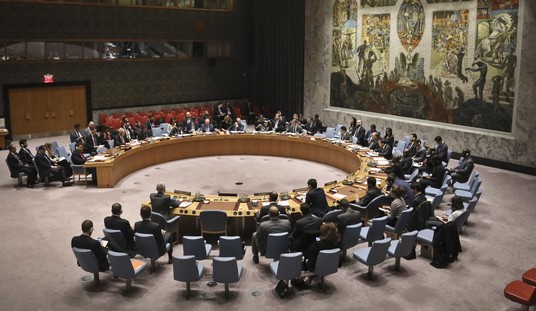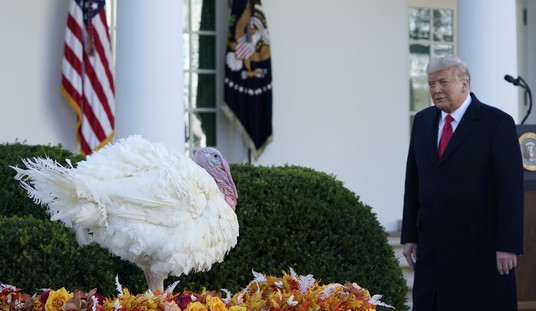While we’re “vigorously” pursuing “meaningful” gun legislation that can’t possibly make it through Congress if it’s anything near “meaningful” enough for this president, let’s also remind everyone that those flashy gun buyback programs local politicians love to tout do about as much to reduce gun violence as, well, gun control does in Chicago.
USA Today covers the latest outbreak of gun buybacks, popping up across the nation in the wake of Newtown. They come with flashy local news reports, B-roll rich with antique rifles and other castoff weapons whose confiscation would have been great for preventing stagecoach hold-ups but not modern crime waves.
Researchers who have evaluated gun control strategies say buybacks – despite their popularity – are among the least effective ways to reduce gun violence. They say targeted police patrols, intervention efforts with known criminals and, to a lesser extent, tougher gun laws all work better than buybacks.
The biggest weakness of buybacks, which offer cash or gift cards for guns, is that the firearms they usually collect are insignificant when measured against the arsenal now in the hands of American citizens.
Notice the ranking of solutions worth a damn when it comes to gun violence— police patrols, intervention, then tougher gun laws. That Wayne LaPierre is so out there with his suggestion of increased police presence in schools. Buybacks are even less effective than more gun control. Why? For the same reason gun control doesn’t work— buybacks deal mostly with law-abiding citizens, not criminals:
The relatively small number of guns recovered isn’t the only problem, Scott said. Buyback programs tend to attract people who are least likely to commit crimes and to retrieve guns that are least likely to be used in crimes.
Scott and others say violent criminals – the people who do most of the shooting and killing – steer clear of buyback programs unless they’re trying to make some quick cash by selling a weapon they don’t want anymore.
That means buyback campaigns more often end up with hunting rifles or old revolvers from someone’s attic than with automatic weapons from the trunk of a criminal’s car.
“They don’t get a lot of crime guns off the street,” said Matt Makarios, a criminal justice professor who studied buyback programs while at the University of Cincinnati in 2008. “You’re only going to reduce the likelihood of gun crimes if you reduce the number of guns used in crimes.”
A buyback in Tucson, Ariz., last week collected about 200 firearms, many of them old or inoperable, in exchange for about $10,000 worth of grocery gift cards. A few hundred feet away, gun dealers set up tables and offered cash for any guns in good enough condition to resell.
“Every gun that came in was an old gun, no assault weapons,” Tom Ditsch, who watched the event, told The Associated Press. “They didn’t even take any weapons off the streets.”
Supporters of buybacks are reduced to arguing they “raise awareness,” just to give you an idea of how big a failure they are in their actual objective. The upside of a buyback program is that at least citizens aren’t being coerced out of their guns, but are instead parting with them voluntarily. Unfortunately, someone was coerced out of the tax money to pay for them. But hey, it’s showy, ineffective, expensive, and gives organizers a deep sense of moral superiority. When you’ve got all that, who needs to actually reduce gun violence?
But don’t look now, the editorial-page team at one of New Jersey’s biggest newspapers is pro-gun buyback because it makes them feel good, so there, and anyone who thinks different probably just wants a “paramilitary weapon manufactured with the express purpose of shredding humans to death.” Uh huh. Who thinks the writer could actually point out a gun with that “express purpose” in a line-up and explain why it’s different than any other semi-automatic handgun of a similar caliber?
Australia is often mentioned by liberals as a gun-control model the U.S. could follow, despite the fact that it still faces mass shootings post-draconian gun control. I appreciate the relative honesty of these liberals who are actually saying they’d like to ban most, if not all, guns. That is entirely unconstitutional, but at least could plausibly reduce gun violence, unlike an “assault weapons ban.” But there’s a rather important part of Australia’s gun control that would be logistically impossible in America.
Australia implemented very restrictive gun control “banning all semiautomatic rifles and semiautomatic and pump-action shotguns and imposing a more restrictive licensing system on other firearms,” but it didn’t just stop there. The government then bought back and destroyed hundreds of thousands of existing guns to the tune of $500 million. This is perhaps the only instance where one might argue a buyback was helpful in reducing gun violence, though studies of Australia’s gun crime rates show “relatively small” improvement thanks to the law. There are an estimated 300 million guns in this country. The feds have neither the competence nor the money to pull off the biggest buyback in world history, and I like to believe the American people they’d be targeting aren’t yet quite docile enough to help them.
None of this, however, should be construed to mean they’ll never try. Lord knows I’ve stopped assuming much is beyond this administration.
Photo credit for front-page photo to gregpc on Flickr.







Join the conversation as a VIP Member